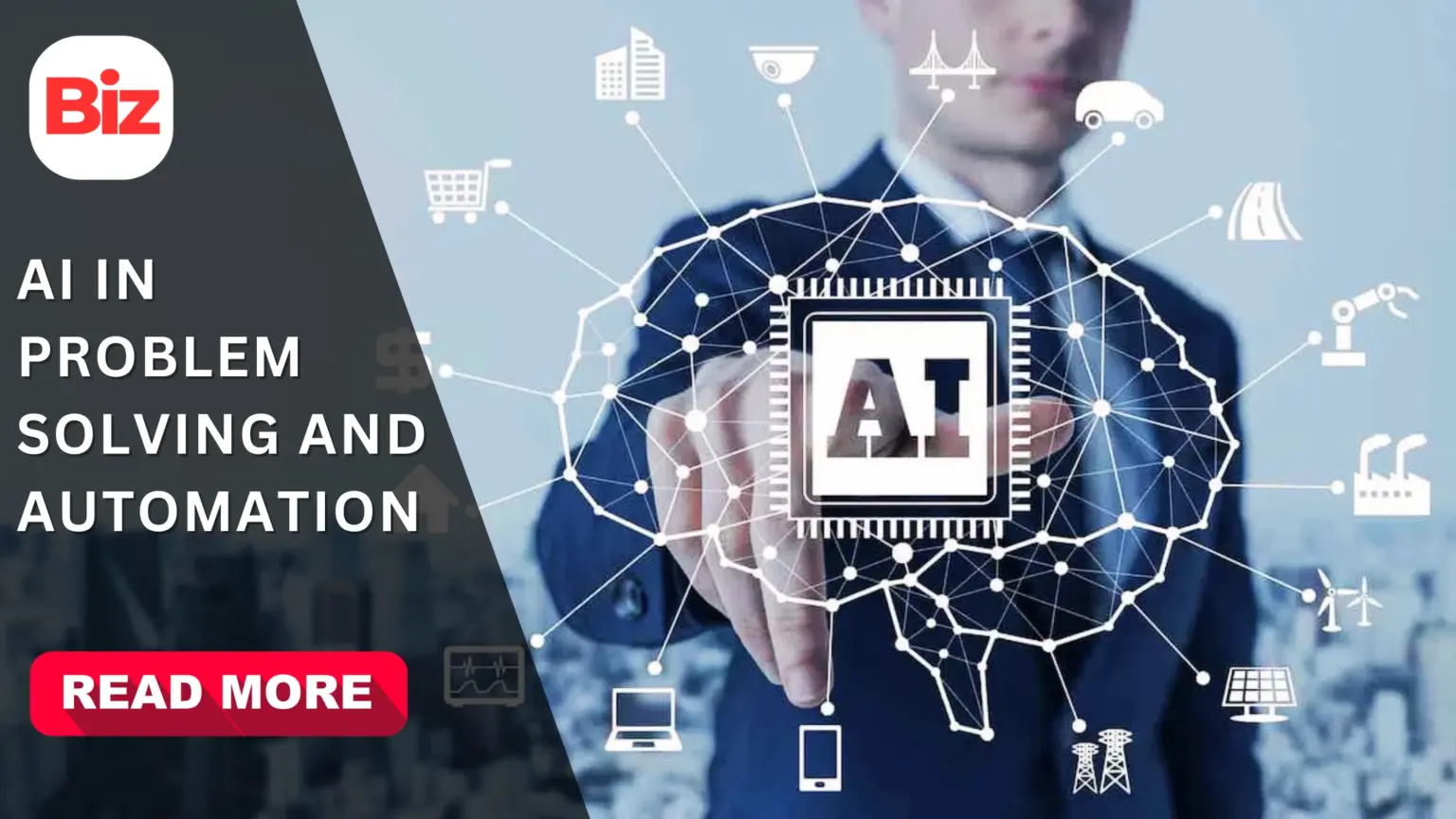Artificial intelligence now shapes how organizations solve complex problems. It blends formal methods with data-driven learning to find efficient solutions. At its core, AI frames problems as states, actions, transitions, goals, and costs. This framing helps engineers build predictable systems. It also helps researchers compare algorithms on clear terms.
Foundations and methods matter. Classical approaches use search and logic to explore possibilities. Search algorithms include breadth-first, depth-first and A*. Heuristics guide search toward promising areas. Constraint satisfaction methods prune impossible options early. Optimization techniques then pick the best solutions under limits. Machine learning adds the power to learn patterns from data and to adapt over time. These methods often combine within a single system.
Problem-solving follows a tight loop. An agent senses the environment. It models the starting state. Allowed actions are then enumerated. Transitions are computed and goals checked. Costs are assigned and plans selected. It tests actions and learns from outcomes. This loop scales from toy puzzles to complex industrial tasks.
Core Methods of Artificial Intelligence in Problem Solving
Representation is the hidden art. Engineers convert messy, real-world tasks into compact models. They pick the right language and abstractions. Good models cut the search space. They let algorithms run faster and more reliably. When exact solutions are costly, designers use approximate or anytime algorithms. These deliver usable results quickly and improve them with time.
In industry, AI powers automation across many fronts. Sensors feed machine vision for defect detection. Natural language methods process maintenance notes and operator input. Predictive models forecast failures and suggest repairs. Inventory systems predict demand and adjust supply. Fleet tools optimize routes and reduce idle time. These real-world uses show measurable return on investment.
Manufacturing gains stand out. AI-driven quality checks flag flawed parts faster than visual inspection. Predictive maintenance schedules service before parts fail. Production monitoring spots bottlenecks in real time. Scheduling algorithms balance capacity, inventory and demand. Together, these systems boost uptime and lower waste.
Artificial Intelligence in Industrial Automation
Warehouse robotics changed logistics. Companies combine mobile robots, picking arms and software platforms. These fleets handle repetitive transport and simplify packing. Automation at scale reduces cycle times and raises throughput. Amazon’s use of robots is one widely noted example of this shift.
Artificial intelligence in industrial automation captures this trend directly. It describes the layered use of perception, planning and learning on the factory floor. These technologies do not replace design. They augment it. They let human experts work on higher-value tasks.
Case study: predictive maintenance in food production. Sensors monitor vibration, temperature and sound. Models learn normal behavior. They then flag anomalies that presage failure. Planners schedule maintenance at low-impact times. The result is fewer stoppages and better quality control. This case shows how data and models solve a tangible problem.
Algorithms and Learning Approaches
From a theoretical angle, problem-solving remains rooted in clear definitions. Academics stress the path from a real task to an abstract problem. That path includes modeling choices and simplifications. Well-chosen models make algorithms practical. They also explain limitations and trade-offs.
Algorithms in practice require trade-offs. Breadth-first search finds shallow solutions reliably. Depth-first search saves memory. A* mixes heuristics and guarantees when admissible heuristics exist. When problems scale, exact search becomes impractical. Engineers then turn to local search, metaheuristics and evolutionary strategies. These methods trade optimality for speed. They often find very good solutions fast. Constraint solvers add pruning and propagation. They reduce the work of search by eliminating impossible branches quickly.
Machine learning broadens the toolkit. Supervised learning predicts outcomes from labeled data. Unsupervised methods reveal structure in raw inputs. Reinforcement learning trains agents by reward signals. Together, these techniques let systems improve with experience. In control tasks, learned policies can replace hand-designed rules. In planning, learned heuristics guide search efficiently. Hybrid systems combine learned components and symbolic planners for robustness.
Building Safe and Scalable Automation
Practical design demands system thinking. Teams integrate sensors, networks, models and user interfaces. They ensure data pipelines deliver clean inputs. Monitoring tools are embedded to detect model drift. They design fallbacks that return control to people when needed. These engineering steps protect operations and users.
Safety requires architectural thinking. Designers separate critical loops from convenience features. They require human confirmation for dangerous actions. All automated decisions are logged for review. They design graceful degradation when sensors fail. These measures limit accidents and preserve trust.
Integration costs matter too. Many factories run legacy controllers and protocols. AI teams must connect to these systems without disrupting operations. Pilots help verify integration and quantify benefits. Data pipelines need cleaning. Engineers must secure data and manage access rights. These operational details often decide whether projects scale.
Skills, Work, and the Future of Robots
Skills and roles shift with automation. Operators gain tools that surface diagnostics and options. Data engineers prepare and maintain data flows. Modelers design and test algorithms. Managers set performance targets and metrics. Training plays a central role. Organizations that invest in people see better outcomes.
Automation raises clear social questions. Will machines displace workers? Some analyses show shifting task mixes rather than pure elimination. Others warn of rapid, disruptive change. A prominent futurist has urged swift adaptation to avoid severe harm to employment. Societies must plan for reskilling and stronger safety nets.
Popular fear sometimes asks, “Will robots take over the world?” as a shorthand. Debate then mixes technical possibility with social anxiety. The evidence in industry shows targeted automation, not general takeover. Nonetheless, the transitions will matter deeply to local economies. Policymakers should follow the data closely.
Ethics, Best Practices, and Governance
Ethics and reliability matter at every stage. Biased training data produces biased outcomes. Poor instrumentation yields wrong inferences. Lack of transparency can erode trust quickly. To guard against harm, teams must validate models. They must log decisions and allow audits. They must include human oversight on safety-critical tasks.
Best practices shorten the path from prototype to production. Start with small pilots and clear metrics. Clean and label data carefully. Use hybrid designs that mix rules and learning. Monitor models in production and retrain when needed. Train staff to work with AI tools, not only beside them. These steps reduce risk and increase impact.
Governance and policy will shape adoption. Standards for testing, transparency and auditing will help. Public funds for reskilling reduce friction. Industry groups can share benign data and benchmarks. Universities will continue to train experts in algorithms and applied AI. Good governance balances innovation and fairness.
The interplay of research and deployment will decide the next decade. Practical engineering validates theory. Novel algorithms unlock new applications. Real deployments highlight gaps and biases to fix. This cycle of iteration drives steady improvement. It also gives leaders time to adjust policies and skills.
Final recommendations for teams building AI automation are simple. Start with a clear problem statement. Choose modeling and algorithmic approaches carefully. Run small pilots, then scale with guarded rollouts. Measure the right outcomes. Invest in people and governance. Keep humans in the loop for important decisions. Follow these steps and automation will deliver durable value.
Teams that choose open standards and clear metrics navigate adoption faster. Transparency builds trust. Measured pilots and worker training create durable improvements. These pragmatic steps reduce risk and accelerate benefits for companies and communities alike.
Conclusion
Artificial intelligence and problem-solving now form a practical partnership. Together they speed answers, cut waste and make systems smarter. Still, automation requires careful design. It calls for quality data, clear models and ethical oversight. When those elements align, AI can deliver large benefits.








